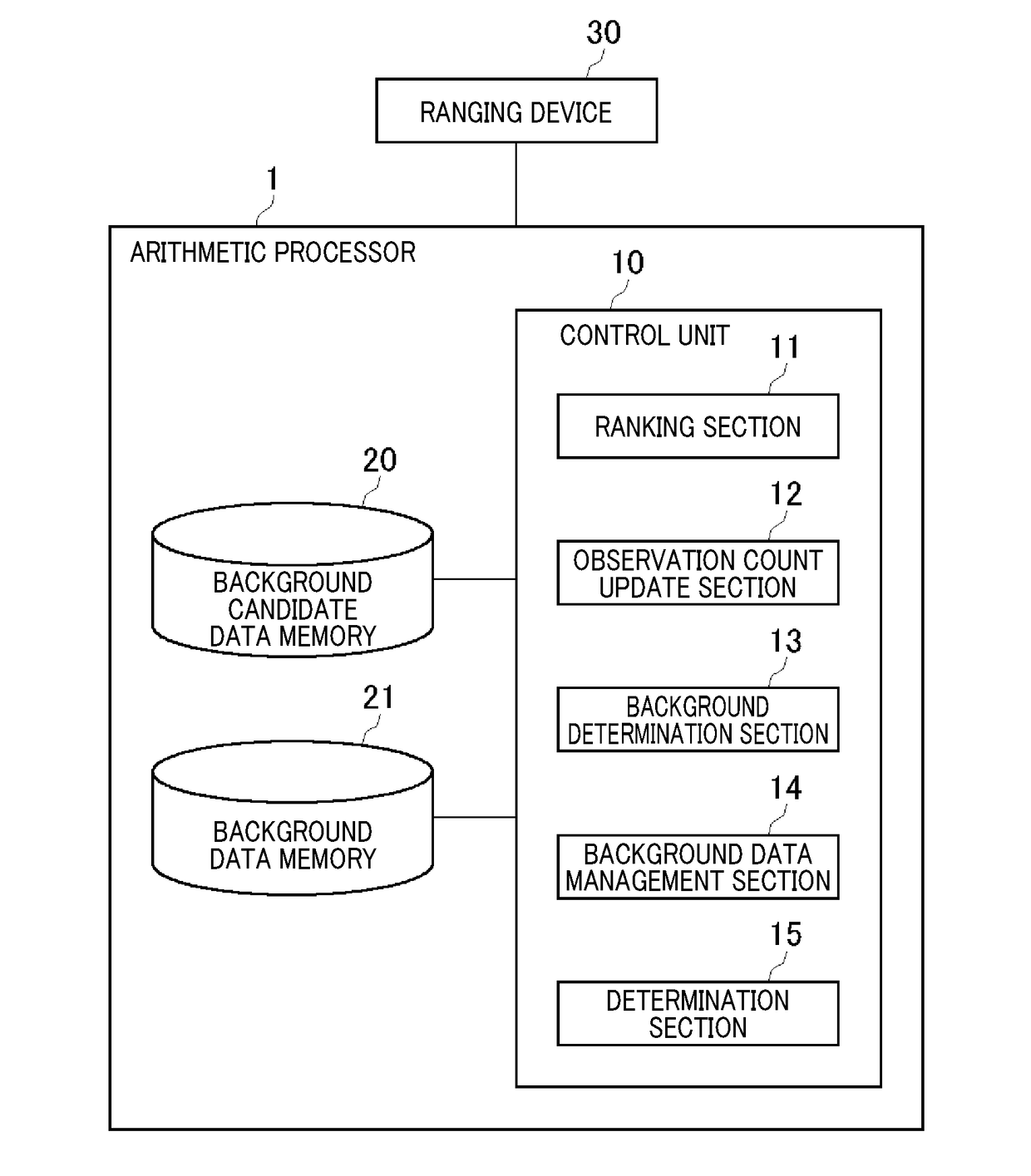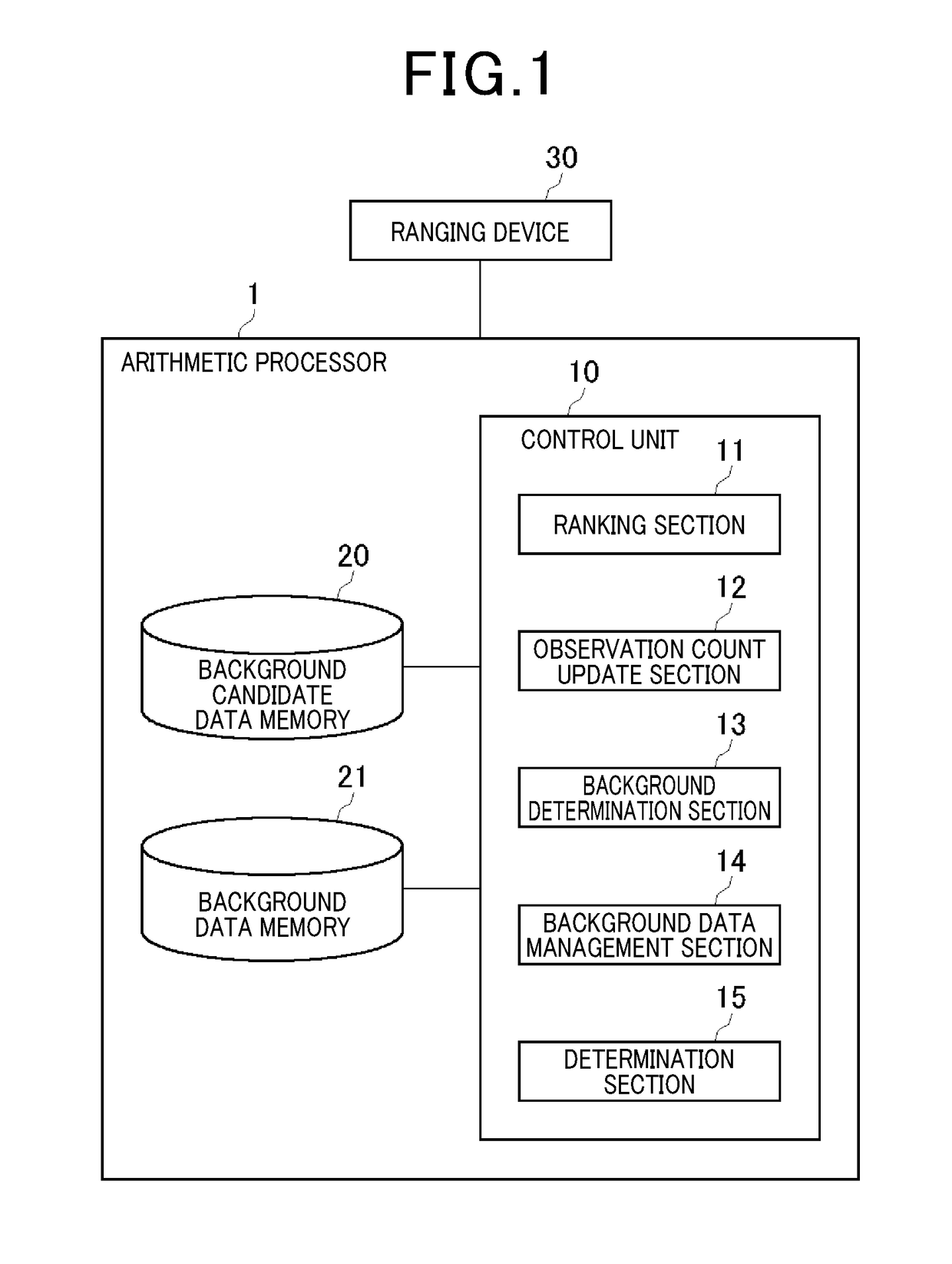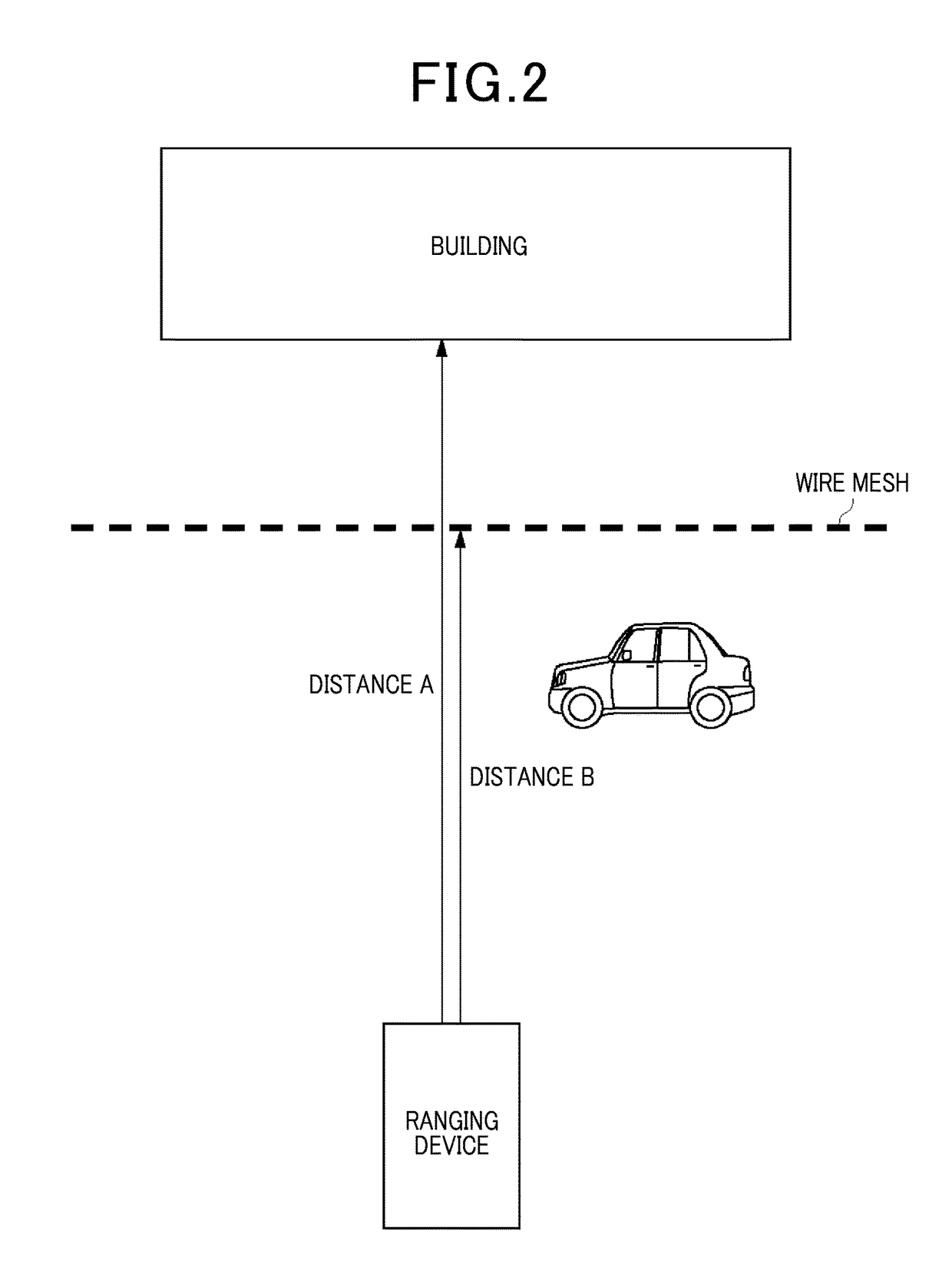Arithmetic processor, arithmetic processing method, and computer readable medium storing computer program
a computer program and arithmetic processing technology, applied in the field of methods of processing data obtained, can solve problems such as difficult to stably specify the background and variable distance data
- Summary
- Abstract
- Description
- Claims
- Application Information
AI Technical Summary
Benefits of technology
Problems solved by technology
Method used
Image
Examples
first embodiment
[0046]FIG. 1 illustrates a configuration of an arithmetic processor 1 according to a first embodiment of the present invention. The arithmetic processor 1 is connected to a ranging device 30.
[0047]The ranging device 30 is mounted to an outer wall, for example, of a building to measure a distance to an object present in a detection area. As an example, the ranging device 30 is configured by a laser light radiation section that radiates laser light, a mirror that reflects the laser light radiated from the laser light radiation section towards the detection area, a motor that rotates the mirror, and a laser light reception section that receives light reflected off an object in the detection area. The ranging device 30 radiates laser light into a detection area to receive the reflected light, and uses the data of the reflected light as a basis to calculate the distance to an object point. The ranging device 30 rotates the mirror to two-dimensionally scan over an area into which the lase...
second embodiment
[0089]FIG. 11 illustrates a configuration of an arithmetic processor 2 according to a second embodiment. The arithmetic processor 2 of the second embodiment has a basic configuration similar to that of the arithmetic processor 1 of the first embodiment. However, as shown in FIG. 12, the arithmetic processor 2 of the second embodiment has a background candidate data memory 20 that further stores persistence time of the background candidate data. The persistence time refers to the period of time from the start of storage of the background candidate data, and the counting of the period of persistence time is reset when the background candidate data is cleared. When there is an entry of new observed data as lowest-ranked background candidate data, the persistence time is counted from 1.
[0090]In addition to the configuration of the arithmetic processor 1 of the first embodiment, the arithmetic processor 2 of the second embodiment includes persistence time update section 16 that updates p...
PUM
 Login to View More
Login to View More Abstract
Description
Claims
Application Information
 Login to View More
Login to View More - R&D
- Intellectual Property
- Life Sciences
- Materials
- Tech Scout
- Unparalleled Data Quality
- Higher Quality Content
- 60% Fewer Hallucinations
Browse by: Latest US Patents, China's latest patents, Technical Efficacy Thesaurus, Application Domain, Technology Topic, Popular Technical Reports.
© 2025 PatSnap. All rights reserved.Legal|Privacy policy|Modern Slavery Act Transparency Statement|Sitemap|About US| Contact US: help@patsnap.com



